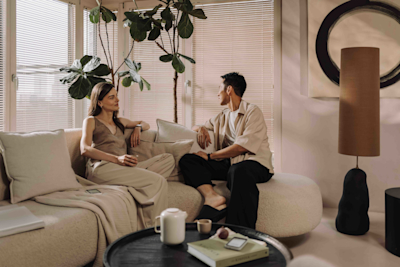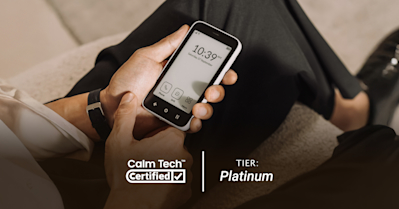
Motivations to Unplug & the Role of Public Figures & Adults
This is the third article in the blog series our guest writer, Jadelin Pikake Felipe. She writes about her research on college students intentionally unplugging from cell phones. In this article Jadelin shares initial findings from her qualitative research, specifically the personal and external reasons that motivated the students to unplug and the role public figures and adults played.
In 2016, as part of my master’s thesis, I recruited nine undergraduate students from four private universities in Northern California and Virginia to participate in a qualitative research project studying the topic of intentionally unplugging from cell phones. I conducted interviews and sought to find answers to the following questions:
What motivated students to initially and continue to unplug from their phone?
How did unplugging impact students’ interpersonal relationships?
How did unplugging impact students’ college experience?
In this article, I share some of the answers addressing the first question, specifically what the students’ motivations were for unplugging.
While the personal motivations to unplug that students disclosed did not reveal any new reasons beyond what we commonly know of why people choose to use their phones less, such as having the desire to be less distracted, their responses provide more evidence that young people do seek time away from their phones.
Students also shared how certain functions and features of their phones, particularly social media apps, caused this. What was surprising to learn was the role public figures and adults played. This presents an opportunity for musicians, celebrities, artists, authors, parents, teachers, schools, and organizations to make a positive impact on young adults and their role in introducing and modeling the value of offline time and healthy tech habits.
Personal Motivations
For all nine students who participated in the research study, preoccupation with social media applications on their phones was the number one reason why they intentionally used their phones less. At the time of my research study, the top social media apps the students said they used were (collectively ranked in this order): Facebook, Snapchat, Instagram, and Twitter. This ranking of social media apps remains identical to the data gathered in the Pew Research Center Social Media Use in 2018 report, with the exception of YouTube.
According to the report, for those ages 18-24, the top online platforms used are YouTube (94%), Facebook (80%), Snapchat (78%), Instagram (71%), and Twitter (45%). Given how much social media platforms are used in our everyday lives to communicate with others and receive information, it’s understandable why social media would be a primary reason for students to want to unplug.
Unplugging completely from their phones was not feasible for the students in my study because of how much of their daily college experience was intertwined with social media. Not only was social media where they socialized with their friends and schoolmates, it is where their schools posted a lot of information about campus life, events, announcements, and academic deadlines. Although it was difficult to unplug from their phones completely, what students did not like was how they used social media to fill moments of boredom and the unwanted social pressures that came with using it.
College freshman, Madison, said she would catch herself automatically looking at social media without any real intention or thought, and that going onto social media apps served as an activity to fill time. She said, “I would just be kind of checking things without really caring. I just did it almost not even consciously, it was just horrible, [it was] just a kind of [thing to] fill time”. According to Jodi, a college sophomore, “Having to be in ‘the in-crowd’, so to say, with social media…was exhausting. Honestly, trying to keep up with everything”. Madison agreed and said that when she was out with friends, “I always have this stress. I need to like post a photo and put it on Instagram and… capture the moment”.
A student leaving his university building wearing a rucksack
The draw to use social media was strong and not easy to ignore, similarly the decision to unplug was not always easy. What was clear was that the students felt a tension caused by the lure social media apps created. Students expressed both verbally and non-verbally their built-up annoyance and frustration about how often they or their peers were using social media apps. On one hand, they felt the time spent on social media apps were time consuming and unproductive but on the other hand, there was a pull towards using social media because so much of their social interactions took place there.
For Lewis and Benji, a college senior and junior, they chose to unplug as a way to reclaim back what they felt was wasted time on social media and improve their in-person social interactions. Lewis said, “I just didn’t really feel in tune to my surroundings”. Benji said what motivated him to unplug was how he saw in-person conversations and group dynamics change negatively. He noticed people were not simply using their phone for their basic functions such as texting and email but were spending majority of their time on social media. He said, “The dynamic just changed for the worse”.
Another reason that motivated students to unplug included a desire to improve their physical health. Lara, a sophomore, noticed her posture was crooked and getting worse from looking down at her phone and both she and Wei, a junior, lacked sleep because they were on their phones so often. Lara said she was “noticing how… [phones were] taking a toll on my health, I wasn’t sleeping as much, my posture wasn’t as good, and how I still need to consciously make an effort to correct it”.
There is good news. Since completing my research project, there has been a new wave of initiatives and tangible solutions created to address some of the concerns and reasons that sparked students to unplug. For example, Apple Digital Health and Google Wellbeing are new ways for phone users to cut back on their phone use and give phone users tools to monitor their screen time, limit access to certain apps, and schedule downtime. A feature I personally like is Instagram’s “Caught Up” feature that tells users when they’ve seen all messages in the last two to three days and gives them the peace of mind they need, they no longer need to feel the fear of missing out (FOMO).
In addition, digital wellness and mindfulness apps have also grown in popularity such as Headspace, Calm, and Stop, Breathe, and Think; the latter app which has a focus on the under 25 generation. These tools–created to help users take back control of their phone usage–are promising. They are a sign of technology companies’ acknowledgement that honoring the online and offline time of users is valuable and that addressing phone over usage remains a work in progress.
External Motivations
Learning what the external motivations were for students to unplug was interesting and surprising. External influences included the military, school, public figures, parents, and family. Two students were introduced to the idea of using their cell phones less by strict rules that were enforced by the military and school. Paolo, a college sophomore, joined the military after high school where cell phones were confiscated and phone use privileges had to be earned.
Lewis attended a private boarding high school where they had mandatory study hall where phones were not allowed to be in the same room. At the boarding school, computers and cell phones had to be left outside of their dorm room or study area and a teacher would inspect and make sure everyone abided by the rules. At the time when Paolo and Lewis were in the military and boarding school, both felt the authoritative enforcement of rules were overbearing, and left them feeling uneasy and anxious because cell phones were (and still is) a primary way to communicate with peers and participate socially. In retrospect, and years later as more matured college students, Paolo and Lewis were thankful they had the strict rules introduced to them at an earlier age and that the rules enabled them to experience time without their phones. This was an experience they felt they may have not easily otherwise got on their own.
The most surprising motivational factors to unplug were the significance that public figure influencers and adult family members played. For Wei, what helped motivate him to unplug was an essay on addictiveness and cell phones and attending Burning Man, a community gathering event that emphasizes people to connect with one another and nature. For sophomore Shirly, the popular song called “Just a Picture” by Kyle featuring Kehlani left a strong message reminding her she should be less preoccupied with what she posted online and the importance of living in the moment. Shirly also attended concerts, where the performers challenged the audience to not use their phones and to enjoy the music and real life experiences. This was a message she had not heard a lot from others around her.
Parents and family also played an important role in helping students begin to see and appreciate the benefits of unplugging from their phones. Six out of the nine students mentioned or alluded to their family having influence on their decision to use their phones less. Most shared how their parents would complain how much they or their siblings were on their phone and made them aware that cell phone overuse was something they needed to work on.
Before Paolo was eighteen years old, his parents would have him put his phone on the kitchen counter before he went to sleep. Although he admitted he would sneak out of his room at night to use his phone, in retrospect, he grew an appreciation for the lesson his parents introduced him to about creating boundaries–even physical boundaries–with his phone. For Shirly, the mutual respect that existed between her and her family helped her be more open to what they had to say about her excessive phone usage.
Since completing my thesis research, when I talk with parents, grandparents, teachers, and other adults about my project, what they are most often taken aback by is hearing that adults were in fact a contributing factor to why students unplugged. There’s a sense of disbelief. It’s as if they know, in their authoritative role as parents and adults, that they have to some degree a high level of influence on children but when it comes to phone usage I often hear “I don’t know how to compete with that thing”.
This phrase is telling that there’s still work to be done to help educate, and provide tools and language for adults to learn (and model) healthy technology habits. A group that has started this work is the Children’s Screen Time Network. In early 2018, the network hosted the very first conference dedicated to reducing children’s screen time and useful tools in their resource library include a Family Technology Rules Worksheet and 5 Simple Steps Reclaiming Your Weekend. These are all good first steps.
After learning more about the role public figure influencers and adults played in motivating students to unplug (even if students’ “aha” moments are years later), I’m convinced young adults and children are much more impressionable than we give them credit for. To the public figure influencers, parents, teachers, and other adults who support young people who are out there: there is value in your ASK for phones to be put away or turned off. Push through those moments you may be the unpopular one who feels like you may be nagging and—just know— you are being heard.
The author: Jadelin has over thirteen years of professional experience in university and college student development, EdTech, and research. She holds a BA in Ethnic Studies from the University of Hawai’i at Manoa and a MA in Organization and Leadership from the University of San Francisco. Currently, she’s a part of the Golden Gate University Development & Alumni Relations team and is building a Linkedin-like online community for networking and mentorship for adult-learner students, alumni, faculty, and staff; and is looking for ways to incorporate digital wellness. Jadelin currently lives in Northern California and in her unplugged time she enjoys dancing hip hop, going to the beach, and finding delicious sushi and Korean food.
Related stories

Why Disconnection Has Become a Modern Luxury
The world we live in demands constant availability. That’s why true offline time has become rare and very valuable.

The Story of Mudita Radiant & Designing Time Differently
Read about the story behind Mudita Radiant, a Swiss automatic field watch designed with clarity, durability, and mindful craftsmanship. Wear time differently.

Mudita Kompakt is Platinum Tier Calm Tech Certified™
Mudita Kompakt is Calm Tech Certified.™ Technology should serve your attention, not compete for it. Mudita Kompakt proves it’s possible.
If you'd like to receive the best stories from our blog, keep up to date with our progress and get notified about our product releases and special discounts.